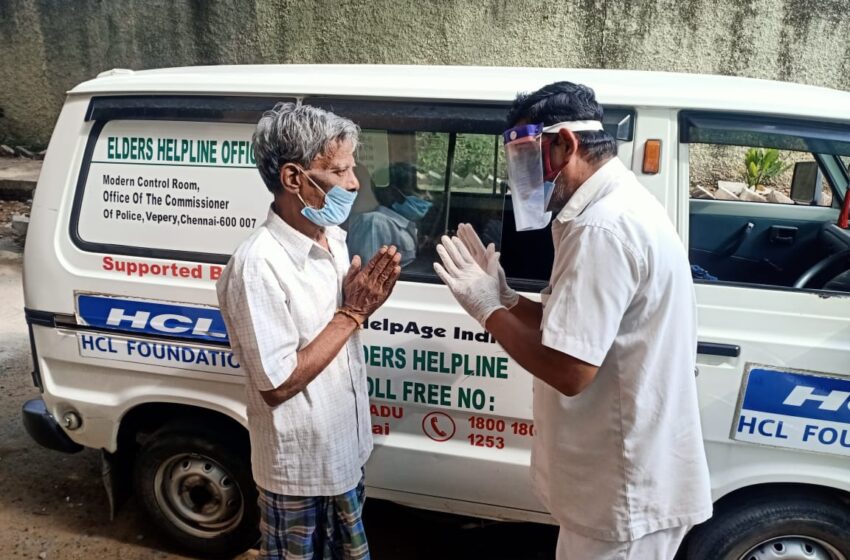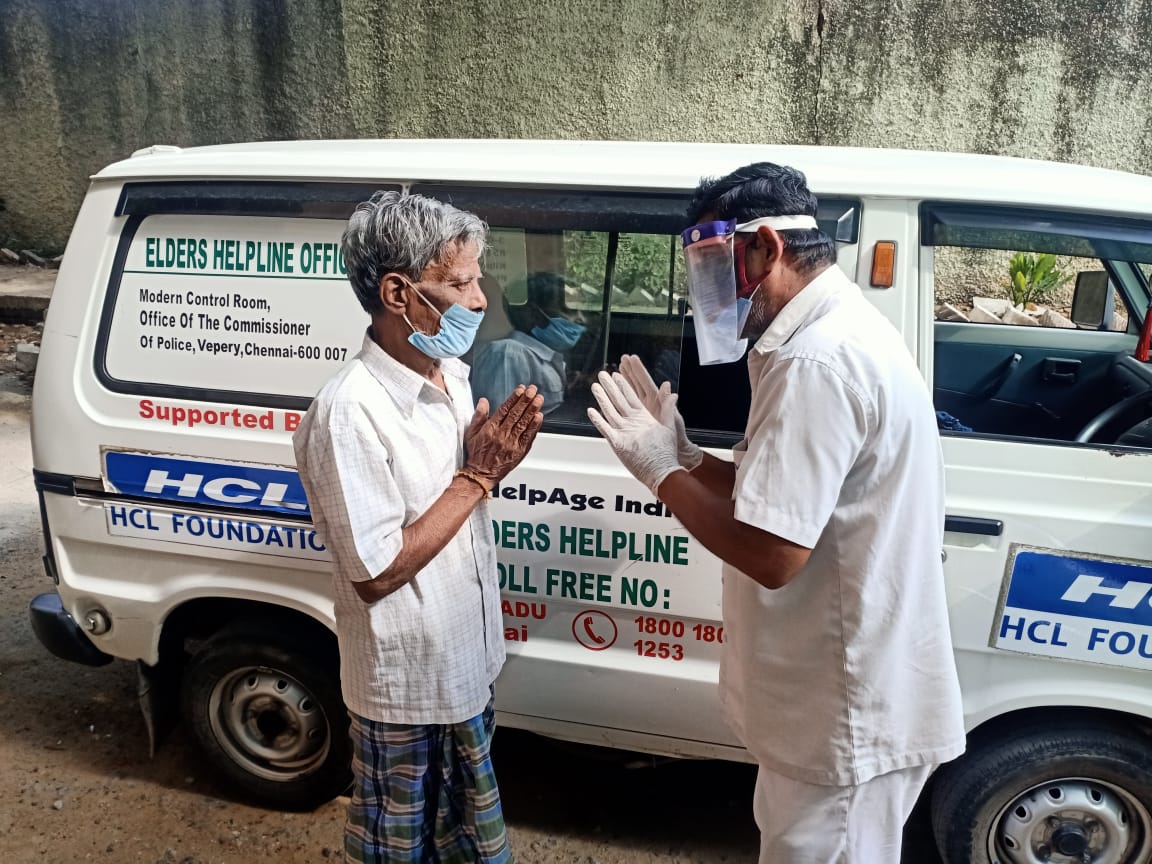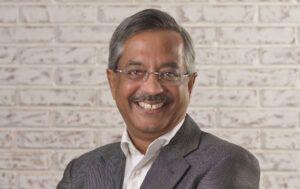Why should Indian Americans care about elders in India?

A HelpAge Mobile Health Unit; photo supplied by the American Friends of HelpAge India

Pramod Bhasin, founder of Genpact and board president of American Friends of HelpAge India, shares how Indian Americans can help mainstream the cause of disadvantaged elders.
India’s elderly population currently stands at 138 million, 90% of them outside the formal/organized sector with 53 million elders living in poverty without a social safety net – no pensions, insurance coverage, or access to healthcare.
Given the demographic trajectory, the elder population is set to expand to 319 million by 2050, says Pramod Bhasin, President of the Board of Directors – American Friends of HelpAge India.
Indian Americans are one of the highest earning ethnic minorities in the United States, and many in the diaspora have parents and grandparents who are well taken care of, he notes.
“There are however millions of similar elders in India with no such support system who need help and assistance – they are among the most vulnerable and marginalized,” says Bhasin.
There are a huge number of Indian Americans who trace their roots to India and wish to contribute to the larger good, and want to see India develop and prosper while uplifting the most vulnerable and marginalized among us, he notes.
READ: HelpAge India gets $1.3 million MetLife Foundation grant for rural elders (October 19, 2022)
In an interview with the American Bazaar, Pramod Bhasin shares how Indian Americans can come to the aid of the most vulnerable and marginalized and contribute to a cause very much inter-linked with India’s future development.
AB: There are many issues and challenges in India. Why should Indian Americans worry about elders in India?
PB: India is a country with immense opportunities, but also huge challenges. There are many developmental imperatives that need to be resolved for India to truly embrace its role as a great world power.
While a lot of attention is being paid to challenges around education, skills and vocational training, etc – in other words, interventions to harness India’s demographic dividend – there are huge gaps brewing in terms of our current demographic trajectory and India’s aging population which do not receive much attention.
Indian Americans are one of the highest earning ethnic minorities in the United States, and many in the diaspora have parents and grandparents who are well taken care of.
There are however millions of similar elders in India with no such support system who need help and assistance – they are among the most vulnerable and marginalized. This is an issue that is very much inter-linked with India’s future development.
AB: What sets apart the HelpAge India cause?
India’s elderly population currently stands at 138 million – 90% of these elders are outside of the formal/organized sector. As many as 53 million elders live in poverty and do not have much in terms of a social safety net – no pensions, insurance coverage, access to healthcare etc.
In addition, there are some major trends that are making elder lives in India even more precarious. For example, migration patterns both within India and from India to overseas are trending upwards – the Government of India estimates that intra-state migration in India stands at about 88% and the share of inter-state migration is about 12%.
In addition, an estimated 2.5 million people migrate from India to other countries each year. All this boils down to the fact that it is elders in families that get left behind to fend for themselves. The shift away from the joint family structure and the impact this has on caregiving further complicates the issue.
How we treat the most vulnerable among us is an important question and will dictate what kind of a country we want India to be – this in my mind is what sets apart the cause of disadvantaged elders.

AB: How is HelpAge India addressing the many challenges facing elders?
PB: HelpAge India has been operating for over 44 years and takes a 360 degree view of the well being of elders, keeping empowerment and dignity at its core.
For example, through a Mobile Health Units initiative, free primary health care services are being provided in 24 states of India to elders.
Elder Self Help groups are empowering over 100,000 elders economically and financially so that they can continue being productive and are not seen as a ‘burden’ by their family and community
Elder Helplines are operating across various states (including in collaboration with the Indian government) and address issues like elder abandonment, property disputes, domestic issues etc.
The rights and enumeration program connects elderly with government resources they are entitled to.
Also more recently, HelpAge has been working on digital literacy, safety and inclusion for elders to ensure that they remain part of the mainstream.
AB: Tell us more about your involvement with HelpAge India and now with its US affiliate – American Friends of HelpAge India.
PB: I have been part of the Board of Directors of HelpAge India for over nine years now and have seen first-hand the incredible impact the organization is making in the lives of two million disadvantaged elders each year.
Redmond, WA, student’s essay on Indian farmers’ struggles wins first prize in India Philanthropy Alliance contest (October 19, 2021)
I know for a fact that this segment of the population receives little attention and is not well served by anyone else – HelpAge is thus filling a very vital gap.
Given the demographic trajectory we are facing where the elder population is set to expand to 319 million by 2050, clearly HelpAge India needs exponentially greater resources to make a true impact in the lives of marginalized elders.
This is the main reason why American Friends of HelpAge India has been set up. We believe there is a great streak of generosity among Indian Americans and well wishers of India who want to make a discernible impact on India’s development.
Through AFHI, a 501 (c)(3) non profit organization, we can harness this power and goodwill for a truly worthwhile cause – in the service of disadvantaged elders.
AB: For 44 years HelpAge India has been raising funds within India – why the appeal to a US audience now?
PB: Because the trend lines as far as demographics and aging go, are not in India’s favor and because HelpAge needs to get its services out to more numbers of disadvantaged aging people and do so faster.
There are a huge number of Indian Americans who trace their roots to India – those who have engaged with HelpAge during their school days in India, those who have aging parents, grandparents, and those who wish to contribute to the larger good, and want to see India develop and prosper while uplifting the most vulnerable and marginalized among us.
Our appeal is to all these people – they will find the HelpAge cause truly one that can champion and get behind.
AB: Why is AFHI participating in India Giving Day on March 2?
PB: India Giving Day is a wonderful initiative that provides a structured avenue for those interested in India’s development to contribute and give back.
Our participation will, we hope, draw attention to the cause of disadvantaged elders, as well as the important work being done by HelpAge India to provide solutions to this challenge.
